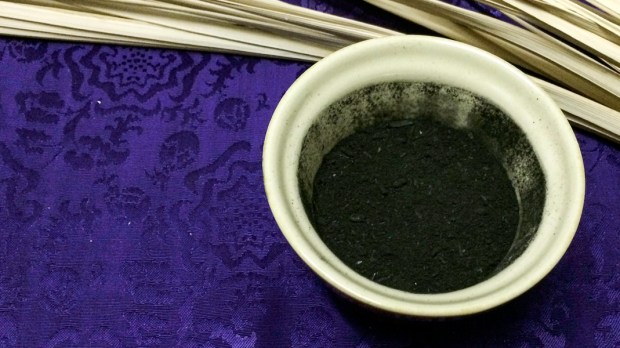Ash Wednesday in the Roman Rite of the Catholic Church is focused, not surprisingly, on the imposition of ashes on all the faithful who attend Mass or a prayer service. This ceremony is relatively brief, but has rich symbolism that is sometimes forgotten.
First of all, the ashes used are typically created at the parish church through the burning of palm branches. These palm branches were blessed on Palm Sunday the year before, which connects the beginning of Lent to the end of Lent, when we remember the Passion, death and resurrection of Jesus Christ. The penitential season begins with the crucifixion and ends with the crucifixion.
Secondly, the prayer used by the priest to impose ashes on the forehead of an individual is meant to remind us of our mortality and the consequences of Adam and Eve’s original sin. The prayer, “Remember you are dust and to dust you shall return,” is a direct quotation from the book of Genesis when God is delivering his judgment to Adam and Eve after they eat from the Tree of Good and Evil.
By the sweat of your browyou shall eat bread,Until you return to the ground,from which you were taken;For you are dust,and to dust you shall return. (Genesis 3:19)
Adam and Eve are then exiled from the Garden of Eden and are not allowed to return, sentenced to a mortal life.
Furthermore, ashes were used by many throughout the Old Testament as a sign of their repentance, asking God to have mercy on them. In the book of Judith, “all the Israelite men, women, and children who lived in Jerusalem fell prostrate in front of the temple and sprinkled ashes on their heads, spreading out their sackcloth before the Lord” (Judith 4:11). Afterwards, “The Lord heard their cry and saw their distress” (Judith 4:13).
Most famously when the prophet Jonah preached in the city of Nineveh, “he rose from his throne, laid aside his robe, covered himself with sackcloth, and sat in ashes” (Jonah 3:6).
Each time when the people sprinkled themselves with ashes, repent of their sins and cried out to God for mercy, the Lord heard their cries and spared them from destruction.
This symbolism of repentance is why, in the current version of the Roman Rite, the words spoken at the imposition of ashes may be Jesus’ injunction to “Repent, and believe in the Gospel.”
St. John Paul II also summarized the depth of meaning behind the ashes.
“Create in me a clean heart, O God, … take not your holy Spirit from me.” We hear this plea echoing in our hearts, while in a few moments we will approach the Lord’s altar to receive ashes on our forehead in accordance with a very ancient tradition. This act is filled with spiritual allusions and is an important sign of conversion and inner renewal. Considered in itself, it is a simple liturgical rite, but very profound because of its penitential meaning: with it the Church reminds man, believer and sinner, of his weakness in the face of evil and especially of his total dependence on God’s infinite majesty.
Ashes are a rich symbol in the Catholic Church, one the connects us to a long biblical tradition of crying out to God for mercy, showing to him our interior renewal by an exterior sign.

Read more:
Why Catholics don’t eat meat on Fridays during Lent

Read more:
Where do the ashes on Ash Wednesday come from?

